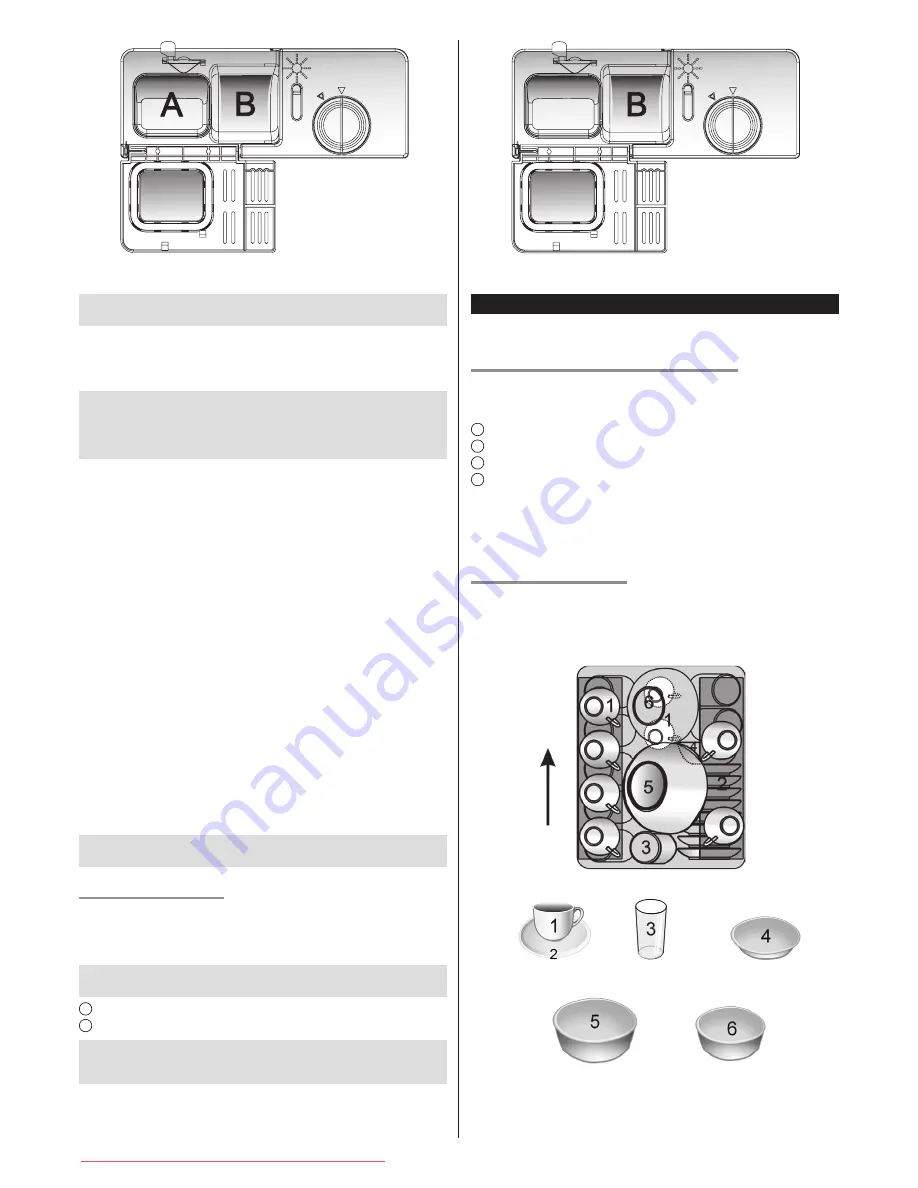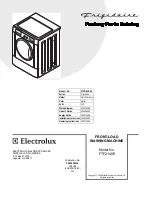
118
ZW-003_v03
ATTENTION! Obey the recommendations of the producer concerning the dosage
and storage of the detergents that are found on the packaging.
Close the lid and push it till it clicks into place.
●
If the dishes are extremely dirty, add additional amount of the detergent to the
●
container in the place used for preliminary washing. The detergent placed in such
a way will work in the preliminary washing phase.
ATTENTION! Further in the manual you will find information on the amount of the
detergent suitable for individual programs. Please remember that any differences
are bound to occur due to discrepancies in dirt intensity or water hardness.
We kindly ask you to obey the recommendations of the producer found on the
packaging of the detergent.
Types of detergents
There are three types of detergents:
with phosphate and chlorine,
●
with phosphate and without chlorine,
●
without phosphate and chlorine.
●
Usually a new powdered detergent is free of phosphate, thus does not soften water.
In such a case it is advisable to fill in the salt container, even if water hardness amounts
to only 6 dH. If in case of hard water you use phosphate-free detergents, the dishes and
glass will probably covered with white stains. For better results use more detergent.
Chlorine-free detergents have low whitening capabilities. Massive, colored stains may not
be removed completely. In such as case choose a program with a higher temperature.
Concentrated and compact detergents
Dishwasher detergents may be divided according to their chemical composition into two
basic categories:
a) traditional alkaline products with caustic ingredients
b) low-alkaline concentrates with natural enzymes.
Enzymes in compact washing agents dissolve smudges, and are biodegradable.
The washing programs use the features of the enzymes making smudges dissolve already
in low temperatures, shortening the time needed for water heating.
If you use dishwasher compact detergents with a shiner, there is no need to add an
additional shiner to the container.
Compact detergents should be used only according to the instructions provided by the
producer of a detergent. If any problems occur during the use of detergents, you should
contact with their producer first.
ATTENTION! Store all detergents in a safe place, away from children. Add the
detergent always just before turning on the dishwasher.
USING THE 3-in-1 PROGRAM
The dishwasher is equipped with a 3-in-1 program, which enables using 3-in-1 compact
detergents. 3-in-1 washing tablets consist of a detergent, a shiner and regenerating salts.
This means you do not use any salts or shiner, if you choose to add a 3-in-1 tablet. The
tablet should be added before washing starts into the detergent
B
container.
ATTENTION! The best results will be achieved by using 3-in-1 tablets with a 3-in-1
program.
1
3-in-1 tablets should be placed in the detergent
B
container.
2
Place the 3-in-1 tablet in the dispenser and start the 3-in-1 program.
ATTENTION! Do not use tablets that are larger than the container. 3-in-1 tablets that
are cracked or crumbled are not suitable for use in this program. The detergent
should be added directly before starting the program.
Loading the dishwasher baskets
For more efficient use of the dishwasher please follow the guidelines below. The functions
and design of the basket(s) may differ depending on the model of the dishwasher.
PRE AND AFTER LOAD BASKET SAFETY MEASURES
Scrape off larger amounts of leftovers from the dishes. Soften burnt food left on frying
pans. There is no need to rinse the dishes under running water.
Place the items in the dishwasher as follows:
1
Items such as cups, glasses, pots, pans, etc. should be placed upside down.
2
Hollowed or curved items should be put in diagonally to facilitate water run.
3
All dishes should be placed safely to avoid knocking over.
4
All dishes should be placed in such a manner to make it possibility for the sprinklers to
turn without any problems during the washing process.
It is advisable not to wash small objects in the dishwasher, as they may easily fall off the
basket.
When taking the dishes out of the dishwasher, unload the lower basket first preventing in
this water from dripping from the Upper basket.
LOADING THE UPPER BASKET
The upper basket is used for more fragile and lighter dishes, such as glasses, coffee or tea
cups, saucers, as well as plates, small bowls and shallow pans (if they are not too dirty).
Place the dishes in such a way to prevent them from moving under the water stream.
TOWARD
INSIDE
medium bowls
saucers
cups
large bowls
glasses
small bowls
Downloaded from DishWasher-Manual.com Manuals











































